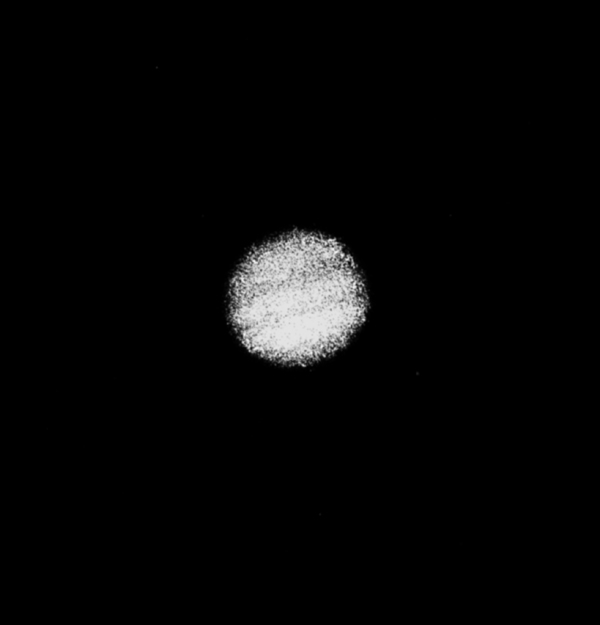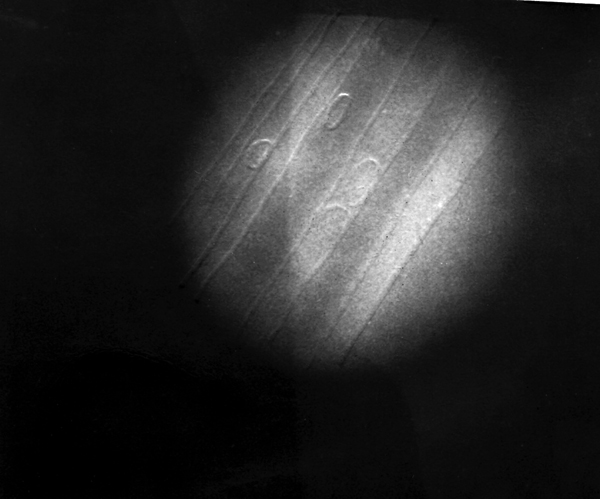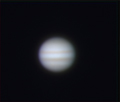
0.5 seconds exposure, Kodak Tri-X 400 film.
5" f/5 refractor plus 6mm orthoscopic eyepiece.
Jupiter. King of the planets. Larger than any other planet in the solar system and more massive than all the other planets combined. A fascinating world of ferocious winds, giant storms, swirling clouds, and racing moons. The sometimes unbelievably rapid changes in the cloud features make Jupiter a favourite for observers. Also it is so large that almost any telescope will show some detail. Adding to the interest are the four largest moons. So bright that they have occasionally been glimpsed with the naked eye, these moons dance from one side of Jupiter to the other, sometimes casting a shadow on the face of the planet, and sometimes disappearing into the planet's shadow. Even more interesting is when the Earth passes through the plane of Jupiter's equator. At that time, the moons undergo mutual eclipses and occultations.
Unfortunately, when it comes to photographing the planets, film cannot compeat with the eye due to atmospheric bluring. During the 1990's, when CCD cameras became available, there was much hope that these would enable amateurs to obtain much better planetary images, and to some extent, these hopes were realised. However, in more recent times, observers have been able to overcome this problem using webcams and have achieved amazing results, undreamed of back in the 1970's or 1980's of film days.

The first photograph of Jupiter I ever took, way back in 1971!!!!! That was in the days when Kodak's Tri-X film was considered the best astrophotography folm for the amateur! While it might have been good for deep sky photography, the considerable grain made it rather less so for planetary work! Even so, I can still remember the thril at seeing a couple of belts in the photo.

Another one from 1971. Unfortunately with this one, the original negative has disappeared and all I have left is one print. The marks on the print are from where I compared the photo to a drawing I had made at the same time.
 1990's images |
 2000's images |
 2010 images |
 2011 images |
 2012 images |
 2013 images |